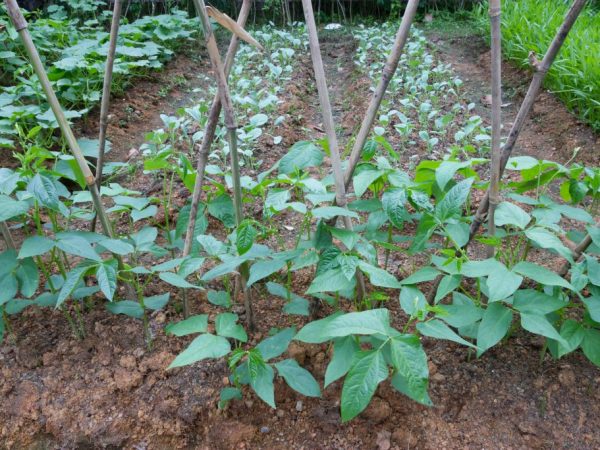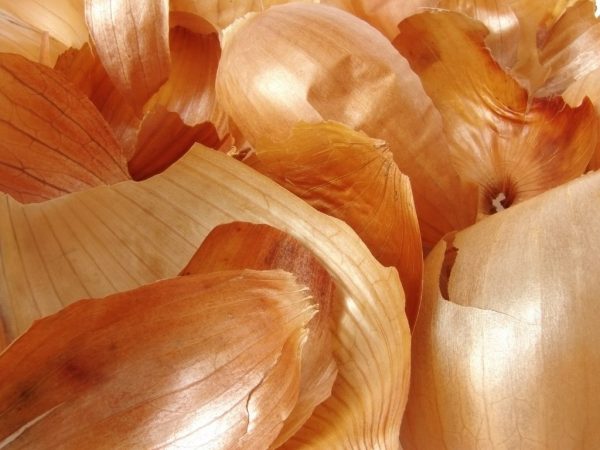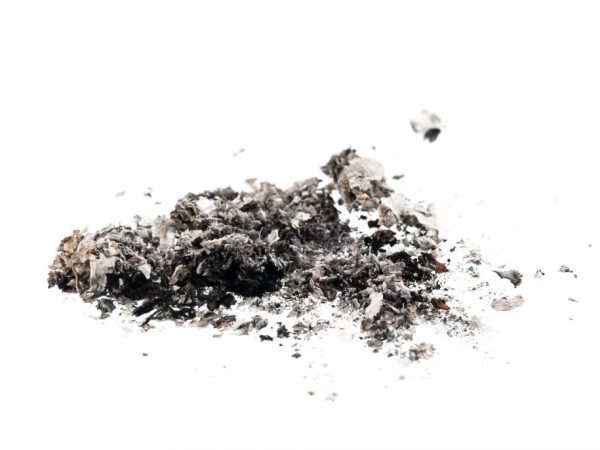What top dressing to choose for salad pepper seedlings
Timely feeding of pepper seedlings helps to get a healthy and rich harvest. We will tell you how to properly feed peppers in the article.

Top dressing for salad pepper seedlings
Feeding rules
Feeding pepper seedlings at home begins with the emergence of seedlings. When fertilizing sprouts on windowsills, do not neglect the advice of experienced vegetable growers:
- Use foliar dressing with caution. It is better not to resort to such actions.
- Try not to pour liquid on the leaves. If this happens, rinse off any drops of formula with clean water.
- Seedlings of the culture require two additional fertilizing before transplanting to a permanent place.
- Use warm water to prepare the formula. The vegetable will react poorly to cold water, its growth will slow down.
- Monitor the temperature in the room with seedlings during feeding. The vegetable grows best in a warm room without drafts.
- Avoid waterlogging of the soil. A properly organized process involves watering young sprouts in the evening, and the next morning feeding pepper seedlings.
- Don't fertilize your crop unnecessarily. Excess fertilizing for only matured pepper shoots can harm the vegetable.
Signs of a nutritional deficiency
To feed pepper seedlings at home, it is not necessary to use all the available knowledge on this topic. Watch your seedlings carefully, and they will tell you the right time to make unscheduled meals. A culture reacts to nutrient deficiencies in different ways:
- If the leaves of the seedlings have turned pale or yellow, and the shoots have become thin, the plants receive an insufficient amount of nitrogen.
- Calcium deficiency appears as yellow-gray dots on the foliage.
- The plant slows down the growth rate, and the root system does not grow with a lack of calcium and a simultaneous excess of nitrogen and potassium.
- The bushes began to turn yellow intensively if the amount of calcium received exceeds the recommended norms.
- The lack of iron is accompanied by white spots throughout the leaf plate.
- If the leaves of the plants begin to turn red, then they do not have enough phosphorus.
When such signs appear, start feeding the vegetable by adjusting the amount of one or another element.
Natural dressings
Along with chemicals, vegetable growers use folk remedies to feed pepper seedlings. There are many recipes for such dressings. Wood ash, ammonia, egg shells, banana peels, sour dairy products, yeast and much more are used as ingredients.
Ash
Pepper loves wood ash. Gardeners recommend sprinkling ashes on the soil before feeding the seedlings of any peppers.You can also prepare self-feeding from the ash residue. Take three tablespoons of dry ash for every five liters of hot water. Mix thoroughly, leave to brew for 24 hours, then strain. Water the sprouts of peppers with the resulting solution.
Eggshell
Eggshells contain a huge amount of calcium. Therefore, a shell-based mixture will help restore the balance of this element in the soil. To prepare a nutritious cocktail, you need to take a shell from three eggs, wash it and dry it. Break it up. Pour this powder with three liters of water, leave to brew. Shake the mixture periodically. After three days, strain, dilute the infusion with clean water in a ratio of 1 to 3.
Onion

Use the available tools
Use onion peels to fertilize pepper seedlings. It disinfects the soil and enriches it with nutrients. Prepare an infusion from it. Pour half a bucket of husk with warm water, leave to infuse for five days. Fertilize the sprouts with this infusion, after diluting it with water. To do this, take 40 ml of an onion cocktail for every 10 liters of water.
Banana peel
Top dressing of pepper seedlings with folk remedies is very popular. Trendy trends suggest using banana peels to feed pepper seedlings. Scientists claim that it is a source of potassium. Dry the banana peel, chop it. Use this powder dry by sprinkling the soil under the sprouts. To water seedlings, prepare an infusion of skins. For three liters of water, take the peel from three bananas, soak for three days. Fertilizer is ready.
Green tea
Folk remedies for feeding sweet pepper seedlings include green infusion. Grind the ground green part of the plants and fill it with water. Withstand this composition for a week. Use herbal infusion when watering. Spend 0.5 liters of tea for each bush. Suitable for a nutritious tincture:
- dandelion;
- nettle;
- dandelion;
- mother and stepmother.
The infusion can be prepared either from one herb or from a whole bouquet.
Coffee Tea
Try using coffee grounds or tea leaves as a top dressing for young seedlings of peppers. Rinse and dry the thickened coffee. Add it to the soil according to the principle of ash, pouring it under the pepper bushes, or add it to the soil at the stage of sowing the seeds. Coffee enriches the earth with oxygen and nitrogen.
Tea bag infusion has a similar effect. Dry the used bags, tear and empty the contents. Dry the tea leaves and use them to fertilize the pepper seedlings.
Organic fertilizers
Pepper loves organic fertilizers. Use slurry or chicken droppings. Prepare the starting infusion beforehand. Take half a bucket of any bird droppings, fill it with water. The mixture will ferment for two weeks. After that, it can be used as a nutrient mixture. Remember to dilute it with water. Gardeners recommend using twenty parts of water for one part of the infusion.
At home, the addition of ferrous sulfate will be relevant. This will avoid the formation of an unpleasant odor during fermentation. Add three hundred grams of vitriol to a bucket of infusion.

Ash or organic
Manure is applied in the same way. For 10 liters of water, 1 kg of slurry is needed. The longer the composition is infused, the more nutritious the mixture will be. Before use, dilute the infusion with clean water in a ratio of 1 to 20.
Yeast
Yeast is a good food for pepper seedlings, it will provide the plant with phosphorus, nitrogen, iron, vitamins and minerals. Thanks to them, the root system develops, the green mass grows more intensively. During the day, insist 1 kg of yeast in five liters of water. This amount of infusion is enough for 50 liters of water. The yeast solution is ready to use.
Use dry yeast to prepare an infusion at the rate of 10 grams of powder per 10 liters of water. Add two tablespoons of sugar to activate the yeast. The mixture is enough to insist for two hours. Apply the solution, first diluting with clean water at the rate of 0.5 liters of yeast infusion per 10 liters of water.
Iodine
Fertilizer for pepper seedlings can be prepared with the addition of iodine. This drug improves the metabolism of plants, increases plant resistance to diseases. Iodine solution is prepared from 2 drops of iodine and 1 liter of water. Do not use high doses of iodine.
Experimental vegetable growers have found that Iodine solution, flavored with 100 grams of milk whey, works wonders for plants.
Oktyabrina Ganichkina's advice
The famous presenter of programs about the garden and the garden, Oktyabrina Ganichkina, over twenty years of experience on television, gave a huge amount of advice on growing vegetables. She has a whole block of programs dedicated to Bulgarian peppers.
First feeding
Ganichkina authoritatively declares that the first feeding of pepper seedlings is needed after the appearance of two real leaves. Use Vegeta at this stage. It is a liquid universal fertilizer that contains macro and macro elements. It is enough 10 ml for 1 liter of warm water. Gently pour the resulting solution over the sprouts.
Apply foliar top dressing. Add 1 tablespoon of growth stimulant solution to one glass of clean water. Spray seedlings with this composition. This procedure can be carried out only if the sprouts are not on the windowsill and are not exposed to direct sunlight.
Do not disturb the seedlings fed in this way for one week. During this time, they should not even be watered.
Second feeding
The next time you can feed young seedlings of peppers, when there are already four real leaves on the sprouts. Use Agricola at this stage. This dry fertilizer is specially formulated to feed tomatoes, peppers and eggplants. Dissolve one teaspoon of fertilizer in one liter of warm water. Add one teaspoon of Energen or Bud solution to it.
Water the seedlings with the resulting solution. Start watering from the edge of the containers in which the seedlings grow, gradually approaching the seedlings themselves. This is done in order to give the root system an impetus for intensive growth.
After watering, spray the sprouts with the Bud liquid fertilizer solution.
Fertilizer preparation
There are quite a few ready-made preparations. There are gardeners who consider it correct to use chemical fertilizers for pepper seedlings. They include micro and macronutrients that are necessary for a vegetable crop at every stage of development.
When using ready-made fertilizers, remember a few rules:
- Excessive amounts of nutrients will harm the plants, it is better to underfeed.
- Use liquid fertilizers.
- Dilute powder preparations in water at the desired concentration.
- Pay attention to the possibility of using the drug for young seedlings.
- Reduce the dosage of the drug by half, unless otherwise indicated in the instructions.
Choose drugs based on the condition of the sprouts. For the first fertilization of pepper seedlings, a nitrogen-potassium cocktail is suitable. The second fertilization should be focused on phosphorus-containing preparations. Double the concentration of these elements and reduce the urea content.
Nitrogen-potassium mixture
The easiest way to nourish vegetable sprouts with nitrogen and potassium is to feed it with a solution of urea, potassium sulfate and superphosphate. Mix three teaspoons of each fertilizer and dilute in a bucket of water. Sprinkle ash on the soil before using it.
In specialized stores, you can choose a drug at your discretion. Use these drugs strictly in accordance with the instructions provided by the manufacturer.
Growing pepper is troublesome.When feeding, do not try to pour out and pour in all the preparations available. The plant will not approve of this. But these difficulties are temporary. Organize the right care, and the culture will reward the attention given to it with a good harvest.


